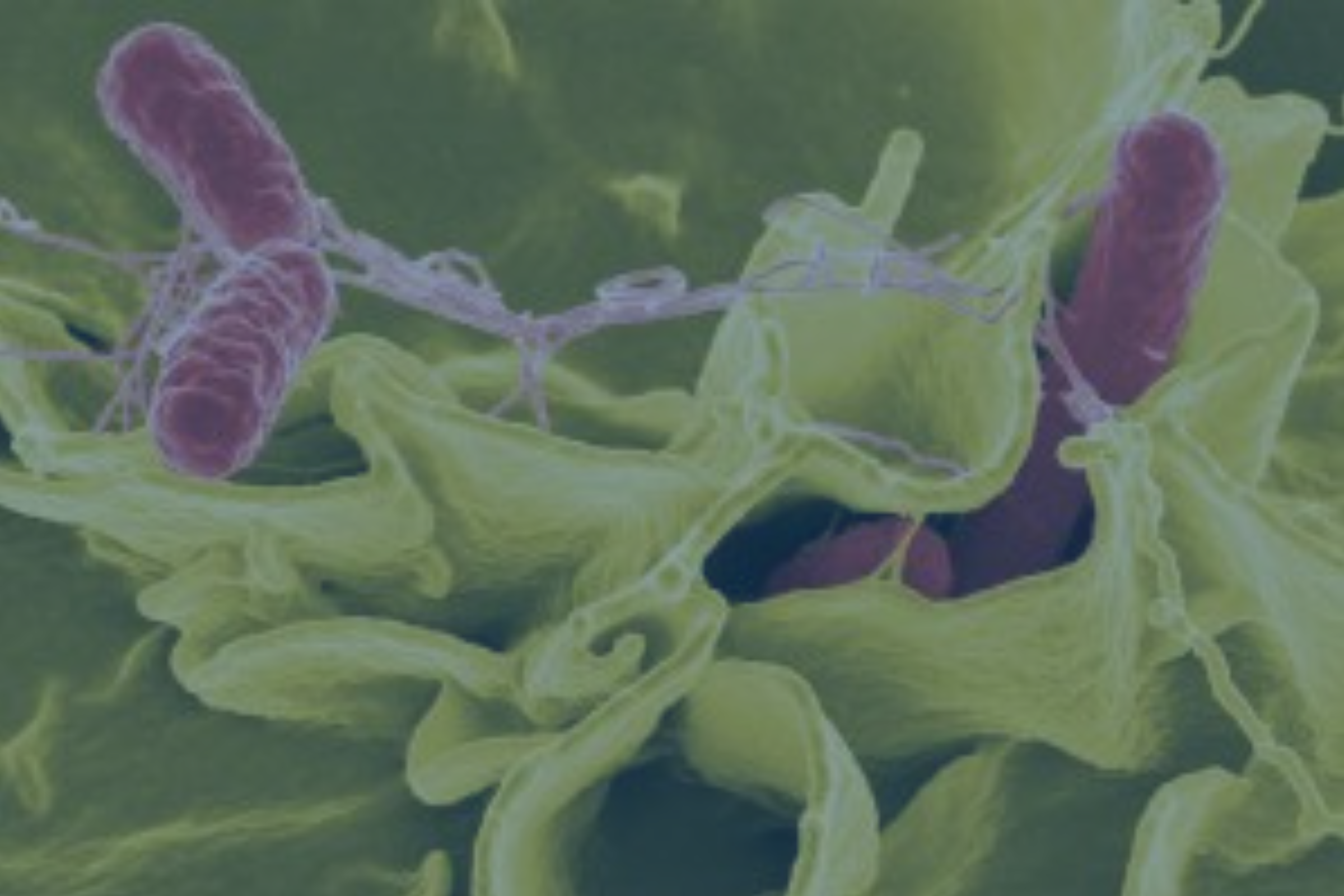KU Förstner et al. 2014. Bioinformatics. doi: 10.1093/bioinformatics/btu533 (abstract)
AJ Westermann et al. 2016. Nature. doi:10.1038/nature16547 (full text, open access)

Salmonella infections end up with many unpleasant symptoms and a likely trip to the hospital. What happens inside the cells is an invisible genetic battle between the bacteria Salmonella cells and the unfortunate host.
Every living cell has a generic blueprint with instructions for all possible scenarios –the DNA. When the opportunity comes, the bacteria activate the part of the DNA they need to start the infection. This DNA is translated into mRNA and the mRNA is used to make proteins – the ammunition of the attack. On the other side of the barricade, the host cells activate the mRNA they need to make proteins for the defence.
Konrad Förstner, a bioinformatician working at the University of Würzburg in Germany, and his colleagues took a new approach to look at this dynamics: they analysed the RNAs produced by the Salmonella and the host at the same time, in the same experiments.
First, the team infected human HeLa cells with the type of Salmonella that causes salmonellosis. Then they analysed the combined RNA from the both organisms by using so called high-throughput sequencing.
Analysing dual RNA-Seq data is complex and time consuming. To streamline all the work, Förstner ran the READemption tool with Cloud Compute to process most of the computational tasks.
Förstner says that using Cloud Compute “accelerated our analysis dramatically.” He also added that “the EGI Federated Cloud helped us to focus on scientific solutions and results instead of resource management and system administration.”
Thanks to this novel approach, the research team found that a piece of Salmonella RNA called PinT is heavily involved in what happens right after the infection. In Förstner’s words, PinT “fine-tunes the transition from the infection stage, which requires a large set of genes, to the survival stage, that needs a different set of genes.”
When PinT activity was shut down in a follow up experiment, the team saw the changes in the bacteria and in the host cell as well. This shows that PinT also influences what happens in the host and is “of high relevance for understanding the infection process as well as the immune response,” Förstner concludes.
The results of the research project were published in Nature, earlier in 2016.
EGI Cloud Compute helped us to handle computational demand peaks when new data sets arrived and by that sped up the whole process significantly. It was really handy to fire up some new VMs and set up the environment automatically. Furthermore I really enjoyed the support by the maintainers. They were really helpful when I had questions. Konrad Förstner
KU Förstner et al. 2014. Bioinformatics. doi: 10.1093/bioinformatics/btu533 (abstract)
AJ Westermann et al. 2016. Nature. doi:10.1038/nature16547 (full text, open access)
Cloud Compute. Run virtual machines on-demand with complete control over computing resources.
The Cloud Compute resources used in this research were provided by: